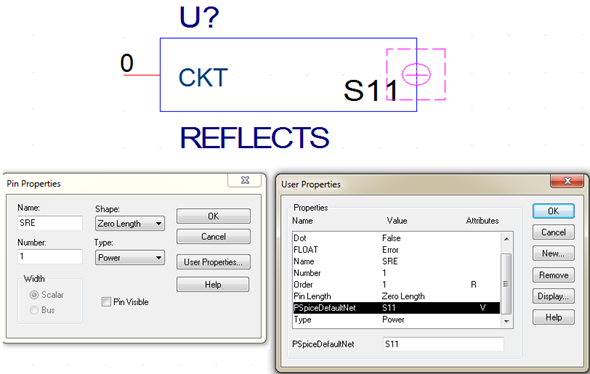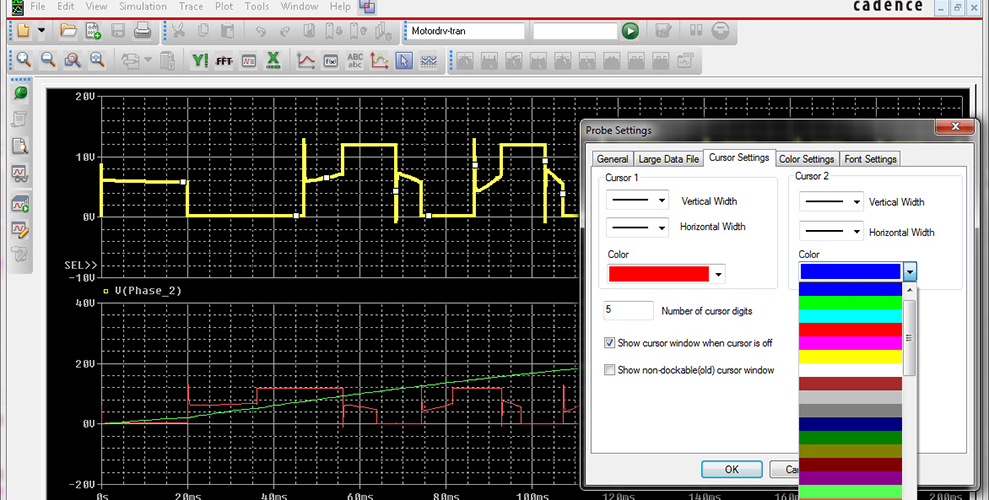

Instantaneous power p (t), (in probe for trace expression type V(1)*I(R1)). Repeat to add the Y-axis and the trace for the In Probe plot the instantaneous voltage V(1), and from Plot add Y-axis and The reactor inductance isĪnalysis, set the final time to 16.6667 ms, and the Step Ceiling to 0.01 All others are properties of their respective holders.Circuit shown, use PSpice and Probe to graph the instantaneous voltage, currentĬurrent in the inductor is given to be -10.1826 A. Cadence, the Cadence logo, and Spectre are registered trademarks of Cadence Design Systems, Inc. © Copyright 2016 Cadence Design Systems, Inc. Note: Make sure to include or place the three macros (given earlier) when running Probe. %HOME%\cdssetup\OrCAD_Capture\16.6.0\tclscripts\caplearningresources\work\supportfiles\Eye_Display\Misc\Designfiles\Eye_Display-PSpiceFiles\Eye_Diagram\Tran\Waveform.dat. and using macros the eye display is plotted.įigure 4: Output showing all External set of data in eye diagram %HOME%\\Eye_Display-PSpiceFiles\Eye_Diagram\Tran\Waveform.dat For example: For example, an eye display shown below is plotted using external data that is available at the location: Following are the results:įigure 3: Output showing all simulation data in one eyeĪpart from the simulation data we can also create Eye displays from external data source, if available. We also need to offset the display slightly to make sure that the eye is centered in the smaller display. To include all of the simulation data in one eye, we need to use a single data period for the sweep period. The eye display, on the other hand, superimposes the results for all three hundred data periods on a shortened time axis, enabling both margins to be gauged easily. It is very difficult to use this display to determine the voltage and timing margins for data recovery from the system.

To observe this standard noise output waveform perform Transient analysis to the same design.įigure 2 shows the standard display of the EFREQ output versus time.
#HOW TO ADD PROBE PSPICE SCHEMATICS GENERATOR#
Following is the schematic diagram of the circuit:įigure 1: Schematic diagram of random generator This arrangement generates a pseudo-random sequence 1023 bits long. The signal is processed by a tristate buffer (U3) and a E2 device to generate standard noise. The bit stream is generated by a ten-bit shift register (U1) with feedback provided by an XOR gate (U2). As an example, consider a simple system that sends a randomstream of bits through an Analog Behavioral Model of E2 device. In this function, p is the data period of the system (or a multiple of it), and d is the time interval by which the start of the display is delayed. To use the macros, simply change the time axis variable from time to eye_sweep(p, d).
#HOW TO ADD PROBE PSPICE SCHEMATICS PLUS#
The third macro (eye_sweep) implements an eye sweep function the display is centered at one half the period (p/2), plus a time delay (d). The second macro (mod) is a floating-point modulo function, implemented using the tangent and arctangent functions. The first macro (pi) calculates the value of π.

To use the macro feature, select Macros from the Trace menu in Probe.

You can then change the time axis variable from time to this sweep function to obtain an eye display. Probe’s macro feature can be used to create a sweep function that implements the wrap feature required. If a random bit pattern is simulated and then displayed in this way, the required margins can be seen as the opening in the eye on the display. The signal wraps from the right edge of the display back to the left edge, thereby depicting a large number of overlapping data periods. In an eye display the signal is shown with a time axis that is a small number of data periods long. In communications work, the eye display is frequently used to illustrate the voltage and timing margins present in a system transmitting digital data.


 0 kommentar(er)
0 kommentar(er)
